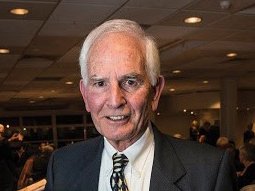Australian Antarctic Science: The First Fifty Years by Desmond Lugg
The book grew out of the highly successful science symposium held in Hobart in 1997 as part of Australian National Antarctic Research Expedition (ANARE) Jubilee celebrations.
ANARE was established by the Australian Government in 1947 and charged with exploring and undertaking research in Antarctica. From low-budget beginnings on the sub-Antarctic Heard and Macquarie Islands, ANARE activities became more focused on the Antarctic continent itself and the Southern Ocean.
The symposium brought together 60 Australian scientists from all fields of ANARE research to highlight achievements in their disciplines, to discuss the relevance and importance of their present activities and to look to likely directions into the future. `Australian Antarctic Science - The first 50 years of ANARE' is a very valuable research source that covers historic moments in Antarctic science through to the present and looks to what may lie ahead.
ANZEC Member - Desmond Lugg
Graduating in medicine from the University of Adelaide in 1961, Des wintered with ANARE at Davis, Antarctica in 1963 as Medical Officer and 2IC. He also conducted medical research for which he received his Doctorate (MD), and with his colleagues, did substantial biological research. From 19968-2001 he was Head of Polar Medicine, Australian Antarctic Division (AAD), and Program Leader of Research in Human Biology and Medicine. From the late 1980s much of this research used Antarctica as an analogue for Space and in 1993 a Cooperative Agreement between the AAD and NASA was signed to facilitate this research and extreme environment medical practice. Des has led many summer ANARE expeditions, including to the Prince Charles Mountains (PCM) in 1969/70 and 1970/71, and Mawson’s Hut in 1974, and in 1980/81 he was Field Leader of the International Biomedical Expedition to the Antarctic (IBEA). Widely published in many polar fields, he has been a member of numerous national and international polar committees, including the Australian National Committee on Antarctic Research (ANCAR), the Scientific Committee on Antarctic Research (SCAR) and the International Union on Antarctic Research (IUCH). In 1978 the award of a Public Service Board Scholarship to the University of Cambridge, England, allowed Des to study at the Scott Polar Research Institute and gain a Post Graduate Diploma in Polar Studies. After retiring from the AAD, from 2001-2007 he was Chief, Medicine of Extreme Environments at NASA HQ, Washington, DC, Visiting Professor at the University of Texas Medical Branch (UTMB), Galveston, TX and Distinguished Research Professor, School of Public Policy, George Mason University, Fairfax, VA. He was awarded the Polar Medal in 1969, Membership of the Order of Australia (AM) in 1984, the NASA Distinguished Public Service Medal in 2007, and the Phillip Law Medal in 2015. Now retired, Des is writing the History of Australian Antarctic Medicine with Dr Jeff Ayton, current Chief Medical Officer of the AAD.


